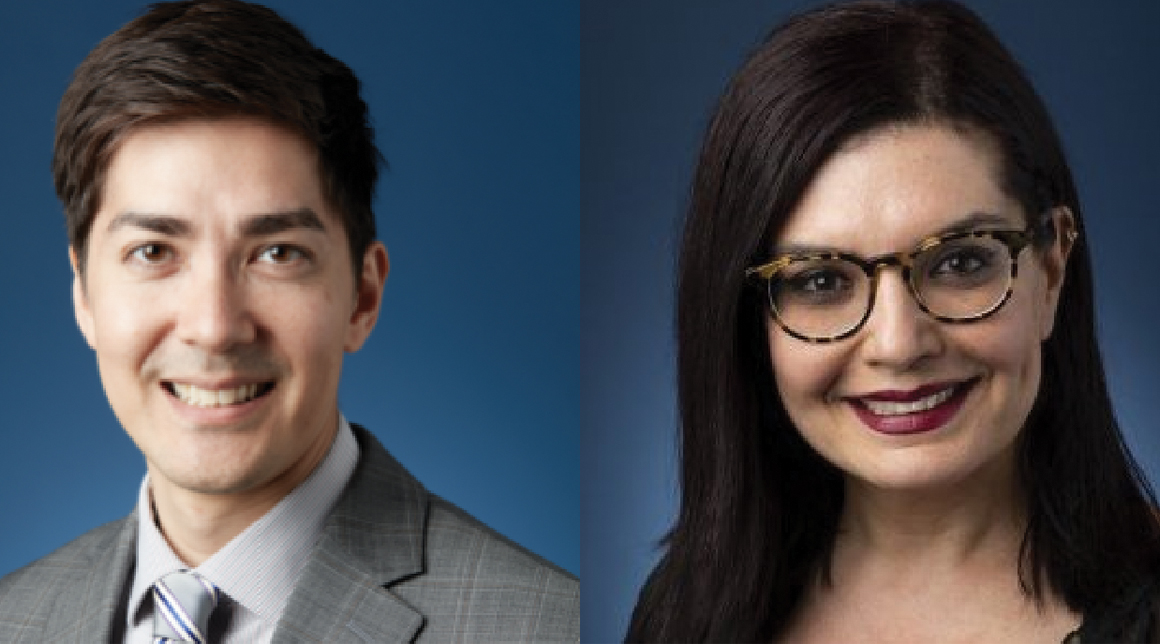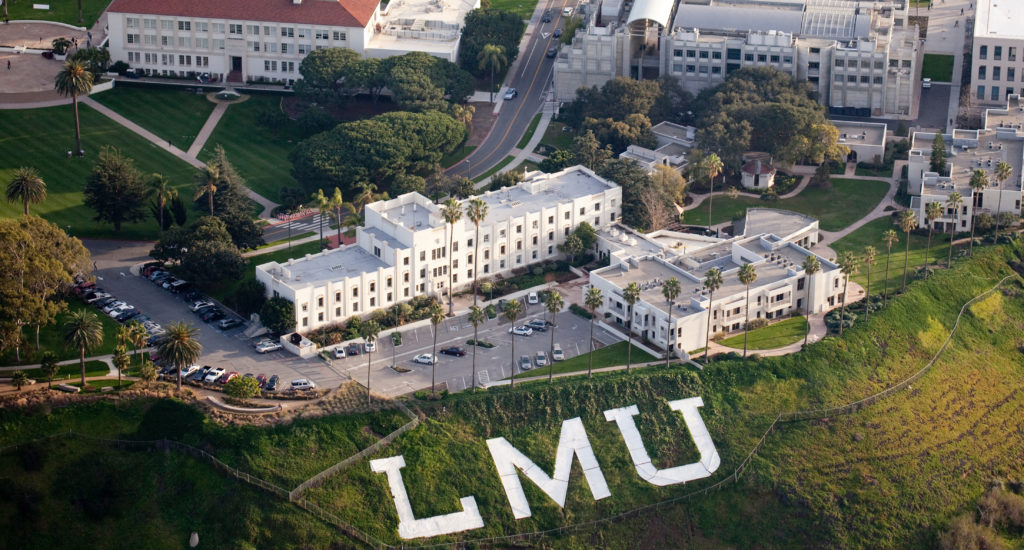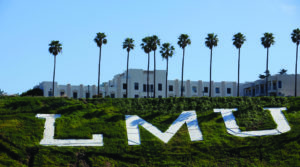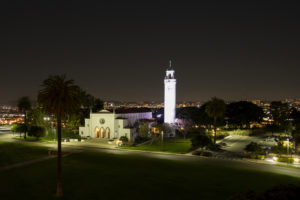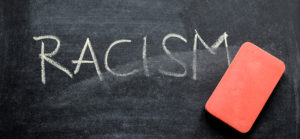LMU ANTI-RACISM PROJECT | Eric Haruki Swanson, Ph.D, assistant professor of theological studies, and Negin Ghavami, Ph.D., assistant professor of psychology, share personal reflections on race, identity, and culture among Asian American and Pacific Islander communities.
Eric writes:
AAPI is not a monolith. Behind each individual who identifies as a member of the AAPI, we see vastly different cultures, languages, and histories that make up their identity. As a multiracial Japanese American who grew up in Japan and United States and recently settled down in Los Angeles, it is clear to me that the sense of my own Asian heritage is vastly different from the experiences and cultural identities of someone who might be, for example, a second-generation Indian American in Illinois, or a third-generation Filipino American in Florida.
The U.S. Census Bureau classifies Asians as “having origins in any of the original peoples of the Far East, Southeast Asia, or the Indian subcontinent,” including (but not limited to) China, Japan, Thailand, Malaysia, Korea, India, Pakistan, Iran, Cambodia, Vietnam, or the Philippines. Pacific Islanders are people whose origins belong to Polynesia, Micronesia, and Melanesia, including (but not limited to) Native Hawaiian, Samoan, Tahitian, Guamanian, Fijian and Papua New Guinean people. This diverse makeup of ethnic groups, languages, and cultures included within this single category should be celebrated. At the same time, it is also important to note that the inclusion of these groups under this pan-ethnic racial umbrella has also come under scrutiny in recent years, with critics arguing that the use of this label has led to the erasure of individual ethnic groups and the specific political issues that require more focused attention.
If we are to think about the AAPI as a useful category that is relevant to all the members it is meant to represent, it seems important to recognize that the AAPI is not a self-evident or static category, but rather one that requires constant and careful reflection of its deeply complex and often contested composition of voices. It begs us to think about what it might mean to be in a community that values “diversity within a unity” and especially asks us to examine what the drive might be to mobilize the multitude of voices included in this group of such varying cultures.
To be quite honest, it is only in recent months that I started thinking of myself as someone who identifies with the AAPI community and I’m still trying to make sense of this complex category. I wonder, however, if it is possible to see the AAPI as a collective of the racialized “other.” We may have vastly different cultural identities, but one thing we might all share is a common “otherness” that we’ve experienced in varying degrees as we’ve navigated life in the United States.
Especially in light of the growing incidents of anti-Asian racism and violence this past year and the realization that there are still many people out there who are completely oblivious to the beautiful diversity seen within Asian American and Pacific Islander communities, the call to come together as a collective “other” can be powerful and perhaps necessary to cultivate a sense of belonging and mutual care. While there is always the danger that the category of AAPI will be utilized as catch-all term by institutions to conveniently lump together what is commonly viewed as the miscellaneous “other,” perhaps it is also our shared “otherness” that holds the potential to bring us together, to stand in solidarity, and resist in a way that will allow for the multitude of our voices to be heard in all its enchanting cacophony.
Negin writes:
I remember waiting for my 9th grade math teacher after school to help me fill out my magnet school application. I had only been in the U.S. for about two months, my English was very limited and my mom was working all the time so I didn’t have anyone to help me. I asked my teacher. She started reviewing my application – she nodded as she read the content but suddenly paused, looked at me and said, “Well, you’re not Asian. You marked this wrong.”
I was confused. How could I be wrong? I’m not white, I’m not black, I’m not Hispanic (the other categories on the document) but I am from the continent of Asia. Iran is in Asia, so I’m Asian. I must have looked very confused because she proceeded to tell me that Asians are people who have small eyes (pulling her eyes back to make them look slanted). I thought to myself, “What is she talking about? Asia is huge – there are so many different countries, so many different people. Did she not study geography?” As I am thinking all of this, she takes her white-out and erases my marking and checks off “white.” “Wait, I’m white? But my hair is not blonde, and I don’t have blue eyes.” I didn’t say anything more and submitted my application.
The manner in which I was racially categorized, did not make much sense to my 14-year-old immigrant self. It seemed arbitrary and illogical. But it made sense to my teacher who was familiar with the system of U.S. racial categorization at the time. As a developmental social psychologist, I know that categorizing people or objects is our minds’ attempt to manage information from the social world. However, I also know that the process of categorization does not happen in a vacuum – it is influenced by social, political, and historical contexts.
Today, as compared to when I arrived in the U.S. decades ago, who gets counted as AAPI has changed. Even the labels used to refer to AAPIs has changed – in fact, many times over. AAPI communities and activists continue to demand for accurate representation at local and national levels in every domain of life. They have asked and continue to ask for more nuanced and differentiated categorizations on government forms, for example.
While we now see such categories as South Asian, Southeast Asian, or East Asian, in academic survey demographics section, we still have a long way to go. While the labels and category boundaries change, it is important to recognize that AAPI is not just a label; it encompasses diverse history, heritage, personal and social statuses and experiences. To that end, AAPI communities continue to ask for more culturally appropriate measurements to assess and capture the diversity among AAPI.
The meaning and significance of racial/ethnic categories are also reflective of the broader systems of power, privilege and disadvantage that give meaning to them. U.S. studies show that young people and adults are aware of the racial/ethnic status hierarchy in the U.S. and this awareness can contribute to their evaluations of themselves and of others. Racial/ethnic categorization has also been shown to be a precondition for stereotyping, prejudice, and discrimination.
Historically, a pervasive stereotype applied to AAPIs is the model minority stereotype. Young children are aware of this stereotype, adults are aware of this stereotype. This stereotype has been used to justify bias and discrimination against AAPIs, for example, in the school setting, workplace and even in access to health care, all of which have deleterious effects on AAPIs’ life outcomes as well as health and well-being.
We also know that racial/ethnic stereotypes and bias are often filtered through other social categories such as gender, socioeconomic status, sexual orientation and so on. These intersectional stereotypes and biases, as noted by black feminist and legal scholar Kimberlé Williams Crenshaw (1989), reflect the interlocking nature of systems of oppression and privilege. Intersectional stereotypes in the U.S. often depict AAPI women as sexual objects and fetishize them; stereotypic images of AAPI men often emasculate them. An intersectionality framework also cautions us against intersectional invisibility (Purdie-Vaughns & Eibach, 2008), suggesting that because a social category is often represented by the most prototypic members of that category, the experiences of those who hold multiple minoritized or marginalized statuses are rendered invisible. To date, very few psychological studies have examined the role of sexual orientation, social class, immigrant statuses in the experiences of AAPIs.
As the U.S. reckons with injustices and mobilizes solutions to combat hate to the fullest extent, we need to also raise consciousness about the perils of invisibility. By attending to the diversity of AAPIs, we acknowledge, respect and celebrate humanity.
OIA Buzz
- CALL FOR SUBMISSIONS: June is Pride month and it is right around the corner! As part of our celebrations, we want to showcase the artistic expressions of the LGBTQ+ community and allies. We invite LMU students, faculty, staff, and alumni to submit an artistic work to showcase on our Pride 365 hub, which will launch on June 1.Submit any original and creative piece that represents the beauty, strength, diversity, and PRIDE for LGBTQ+ identities! We encourage variety, including:
- Visual Art – drawings, paintings, digital and graphic designs, photography, sculptures
- Written Works – poetry or prose
- Musical contributions
- Video – dance performances, skits, videography, etc.
Complete this form and upload your artwork to share your pride with LMU.
- In Six Words continues to accept submissions from all LMU community members. Connect with others, learn new perspectives, share your own, and contribute to a richer and more culturally conscious LMU. Read other stories and submit your own here.
This week, we spotlight Chao Zhao, a graduate student in the Marriage and Family Therapy and Art Therapy program in the School of Education. Chao emphasizes the strength of ally-ship:
“Together, soft water can penetrate mountains.”
Chao says: Thinking about what has happened in the history, what I have witnessed during the past six years, and what I have experienced during the past year, I want to say I support all people to have equal rights. No one should be discriminated by skin color, religion, race, gender identity/expression, body image, or experience. Together, we can make the change happen. Like water, social justice has different forms, but it’s powerful when each single water drop comes together and moves toward one direction.
